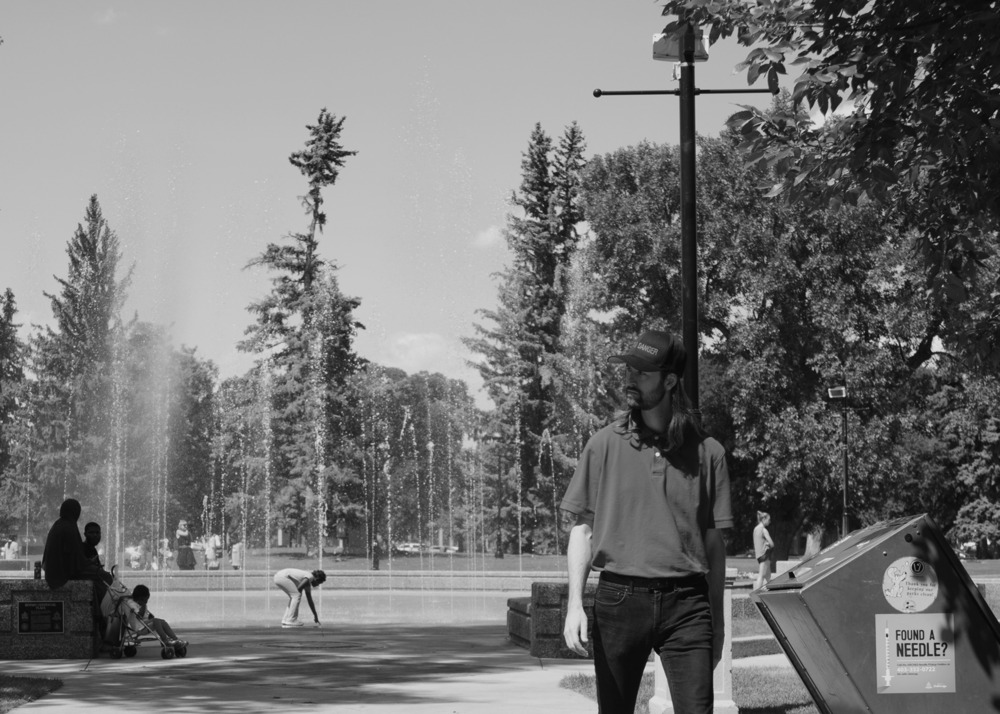
DIRT & DANGER
first performed on August 16, 2019
Various sites, Lethbridge, Canada
performed once in 2019
ANDREW RABYNIUK
Montreal, Canada
andrewrabyniuk.com
DIRT & DANGER
ANDREW RABYNIUK
“Dirt & Danger” is a response to the various interests shaping urban development and civic discourse in Lethbridge, a small city in southern Alberta experiencing significant growth and urbanization in the midst of a social and health crisis. During the performance, I walk through public spaces in the city’s center dressed like a member of a police-sanctioned, citizen patrol group called The Watch. I mimic the group’s uniform and wear a hat with the phrase “Dirt & Danger” embroidered on the front to take a rhetorical counter-position against the obfuscating language used in the City’s Downtown Clean and Safe Strategy.
This work is not an argument against cleanliness and safety, as such; it suggests that “clean” and “safe” are not neutral objectives. They are targeted: exclusive categories aimed at social conformity by establishing narrow standards of conduct while vilifying all those who are unable or unwilling to accept such strict parameters of being.
“Clean” and “safe” describe idealized and depoliticized spatial conditions where structures of domination are maintained and their operations proceed unencumbered. On the other hand, a coarse and gritty space is an ever-shifting aggregate consisting of intimate circumstances, distributed forces, and concrete political effects. These are open, necessary, and generous commons. Dirt and danger are negative conditions that form a complex threat to power. They expose its prejudice and coordinated ambitions by showing what it sweeps away. But they also make people acutely aware of their own contingent vulnerabilities within the fluctuating dynamics of social relations. Danger is immediate and corporeal as much as it is imaginary. The point here is not to exchange one set of rhetorical terms for another, but to acknowledge that they are both, in fact, language used with intent. A power motivated by cleanliness and safety always involves discrimination and, at some point, will use force to achieve its ends.
At its core, this project advocates for spaces with profound capacity to receive and support the fullness of lives lived. It implies that, when couched in the economic logic of an urban revitalization strategy, “clean and safe” designate a closure founded on an imaginary ideal—an unreal estate of absolute normativity and capitalist productivity—impossible to obtain in spite of strict enforcement. Dirt and danger move in another way; they are situated, contextual, and open categories meant to prompt a careful consideration of what constitutes violence and how it is enacted in the city.